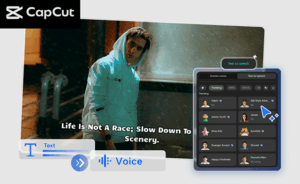Effective Ways to Use LinkedIn to Search for Jobs

Have you ever thought about the potential power of LinkedIn in landing your dream job? Well, you definitely should! In an era where digital footprints matter as much as your physical resume, LinkedIn stands as a crucial platform for job seekers. This article intends to arm you with knowledge and techniques on how to use LinkedIn strategically to tap into job opportunities.
“LinkedIn is no longer just a networking site, it’s your professional showcase to the world.”
LinkedIn allows you to not only connect with potential employers and recruiters, but also to exhibit your skills and achievements in a professional environment. So, how can you navigate this platform effectively? What are the features you need to leverage to boost your chances of being noticed by the right people?
- Profiling: Think of your LinkedIn profile as your online resume – detailed, updated, and well-presented.
- Networking: Building the right connections can lead you to unadvertised job openings.
- Job Search: Did you know LinkedIn has a dedicated job search tool?
- Learning: Expand your skills with numerous LinkedIn Learning resources.
This robust guide will walk you through all these aspects, helping you understand and utilize LinkedIn to its full potential for job hunting. Together, we can turn LinkedIn from a basic networking site into a powerful job-seeking tool.
Table of Contents
Building a Strong LinkedIn Profile
Having a robust LinkedIn profile goes beyond filling out the basics. It’s about making your profile stand out from the millions of other users on the platform. You’re not merely a collection of job titles or skills, but an individual with unique experiences and values. Therefore, it’s imperative that your LinkedIn profile effectively tells this story, making it attractive to potential employers or collaborators. So where do you start?
Start With a Professional Photo
Did you know that LinkedIn profiles with a professional headshot receive 14 times more profile views? It’s not just about looking great, but also about signalling that you are an active participant and it shows seriousness. Choose a photo that is clear, professional, and that authentically represents you and your industry.
Completion Matters
Profiles that are 100% complete are 40 times more likely to receive opportunities through LinkedIn. Hence, fill in every section: your location, industry, current position, past positions, education. Don’t leave anything to guesswork.
Don’t Neglect the Basics
Ensure your contact information—your email, phone number, etc.—are up to date. Include, also, any relevant websites or portfolios that showcase your work.
Customize Your LinkedIn URL
A custom URL enhances the professionalism of your online presence and improves the searchability of your profile. Instead of a string of numbers that LinkedIn automatically assigns, your URL will be easily memorable and sharable.
Add Rich Media
You can enhance your LinkedIn profile by adding multimedia such as videos, images, links, and presentations to your Summary, Experience, and Education sections. This rich media can provide evidence of your accomplishments and create a visual portfolio of your professional story.
Include Volunteer Work and Causes
Last but not least, highlighting your volunteer experience can make you more attractive to potential employers. According to LinkedIn, 1 in 5 hiring managers in the US consider volunteer experience when evaluating candidates. Therefore, don’t be shy about adding this to your profile.
Optimizing Your LinkedIn Headline
Your LinkedIn headline is more than just a job title; it’s your personal brand’s tagline. It’s the first thing people see, alongside your name and photo, when they land on your profile. How can you make it a compelling representation of your professional identity, you ask? This is where we get into the heart of optimizing your LinkedIn headline.
Firstly, don’t limit yourself to just stating your current position. This is your opportunity to showcase a bit more about who you are as a professional. Aim for a blend of clarity, uniqueness, and relevance. However, do keep in mind the 120-character limit.
Remember, your headline should be a concise, easy-to-understand encapsulation of what you do and how you add value.
You could consider mentioning a key skill or specialization, your career goals, or even an accomplishment you’re proud of. For example, rather than ‘Digital Marketing Manager’, you might go with ‘Digital Marketing Manager | SEO Specialist | Boosting Online Traffic and Conversion Rates.’
- Clarity: Be straightforward about what you do, avoiding jargon and acronyms that aren’t widely known.
- Uniqueness: Differentiate yourself from others holding the same job title.
- Relevance: Highlight what makes you a great match for the roles you’re targeting.
Finally, don’t forget to test different headlines and monitor the impact on your profile views and connection requests. A bit of experimentation can go a long way here. Remember that refining your personal brand is a dynamic process, and that your headline can (and should) evolve along with your career.
Crafting an Effective Summary
Have you ever found yourself at a loss for words when asked to describe who you are and what you do in a concise yet captivating manner? That’s where a compelling LinkedIn summary comes in! This part of your profile is your golden chance to charm potential employers, making it critical that you nail it.
Let’s dive into some key strategies to ensure your summary is effective and hard to overlook.
- Make the First Sentence Count: The first sentence of your summary sets the tone for the rest of your profile. Make sure it’s punchy and attention-grabbing, compelling viewers to read more.
- Tell Your Story: Your LinkedIn summary is the perfect place to give people a glimpse into your career journey. Use this space to detail your experience, your achievements, and the value you can bring to a potential employer.
- Speak Their Language: Consider your target audience when crafting your LinkedIn summary. By understanding your audience and using their language, you can establish rapport, garner interest, and make a stronger connection with your prospective employers.
- Mix Professional and Personal: While it’s critical to highlight your professional strengths and achievements, adding a personal touch can make you more relatable. Sharing something unique about yourself — your passion, hobbies, or the cause you support — can pique interest and build a more profound connection.
Now, let’s explore how you can craft a summary that syncs with your career objectives and personal brand.
Tip: Include a call to action at the end of your summary. What would you like viewers to do after reading your profile: Visit your website? Connect with you on LinkedIn? Share your portfolio? Be clear, inviting, and make it easy for them to take the next step.
Adopting A Story-Telling Approach
Your LinkedIn summary isn’t the place for a flat list of qualifications or a colorless career snapshot. Instead, we recommend using a story-telling approach to make your profile more engaging. Weave the highlights of your career journey into an interesting narrative, with you as the protagonist overcoming professional challenges and achieving victories. You only get a small window of opportunity to convince recruiters that you’re worth further exploration — make the most of it!
Highlighting Your Strengths and Unique offerings
LinkedIn is your digital billboard and your summary is where you get to shine. Frame your accomplishments in a way that unfold your unique selling points. Have you increased department-wide productivity by 30%? Did you streamline a process that resulted in significant cost savings? It’s time for those achievements to be front and center on your profile. Use metrics and facts to substantiate your claims for maximum impact.
Showcasing Your Experience and Skills
When contemplating how to establish your legitimacy and expertise on LinkedIn, there’s no better place to do this than the “Experience” and “Skills & Endorsements” sections. These sections serve as the backbone of your LinkedIn profile, providing incontrovertible evidence that you have what it takes to excel in your given profession. But how can you best demonstrate your experience and skills in a way that resonates with potential employers?
Detailing Your Role in Each Job Experience
Firstly, showcasing your experience isn’t just about listing all the jobs you’ve had; it’s about delving into the specifics of those roles. We’re talking about detailed descriptions—not just URLs and company names. Your main goal should be to communicate the value you brought to each organization. This can be achieved by enumerating key accomplishments, projects you’ve completed, or goals you’ve achieved. This way, potential employers can see, in tangible terms, how your efforts have translated into company growth.
Highlighting Your Range of Skills
Secondly, your skills section needs to reflect a balance of both hard and soft skills. Hard skills are teachable abilities that are job-specific, whereas soft skills center on traits or interpersonal abilities. For instance, if you’re in digital marketing, your hard skills might include SEO or content marketing, while soft skills may involve team leadership or problem-solving.
Gathering Recommendations and Endorsements
Additionally, if you can gather endorsements for these skills, even better. A skill endorsement is a one-click way for your connections to endorse the skills listed on your profile. It’s worth noting that endorsements from people who have direct experience of your abilities carry more weight with potential employers. Recommendations, on the other hand, require more effort as they involve receiving a written note from a LinkedIn connection, to endorse your workplace capabilities.
Consistently Updating Your Profile
Finally, keep your profile updated. Just as professionals continue to learn and grow in their careers, your LinkedIn profile should reflect this ongoing journey. Update your experience and skills as and when you acquire new ones and aim to keep your profile an accurate reflection of who you are professionally, at this moment.
By showcasing your experience and skills in this detailed and strategic manner, you’ll be able to leverage one of the key strengths of LinkedIn—its ability to present an exhaustive and compelling picture of your capabilities to potential employers.
Adding Relevant Keywords to Your Profile
Ever wondered how certain profiles get noticed more often on LinkedIn? The secret lies in the judicious use of relevant keywords. Keywords, my dear reader, are those significant words related to your skills, experience, and industry that potential employers often use to search for candidates. Having these terms in your profile can greatly enhance your visibility among the hordes of profiles vying for attention.
Getting down to the nitty-gritty, where exactly should you place these magic words? LinkedIn algorithms prioritize certain sections over others when it comes to including keywords. The headline and the ‘About’ section are given considerable weight; so, sprinkle those relevant words generously. But remember, balance is key. Overdoing it can make your profile appear less genuine.
Using Job Descriptions as Your Guide
While selecting keywords, looking at job descriptions in your field can be an excellent method. The skills and qualifications that employers seek are usually filled with relevant keywords. Similarly, consider incorporating buzzwords or industry lingo that reflects the trends and demands of your chosen field.
Keyword Research
Like any other search engine, LinkedIn also has its unique dynamics for keyword optimization. A simple strategy is to use the platform’s search bar. Type in your field of interest and pay attention to the autocomplete suggestions. These are popular search queries that people often look for. Additionally, you can also analyze the profiles of people who hold the positions you aspire to. What keywords do they use? How have they structured their profiles?
The Role of Skills and Endorsements
Lastly, let’s not overlook the ‘Skills and Endorsements’ section. This is a prime spot for keywords. By highlighting your skills here, you provide LinkedIn’s search algorithm with more data points, increasing your chances of appearing in relevant searches. Plus, when your connections endorse you for those skills, it adds credibility to your claims. It’s a win-win!
In conclusion, incorporating keywords into your LinkedIn profile isn’t just about SEO. It’s about portraying your value in a language that recruiters understand. So, don’t let this opportunity slip away. Explore, experiment, and elevate the impact and reach of your profile with keywords.







